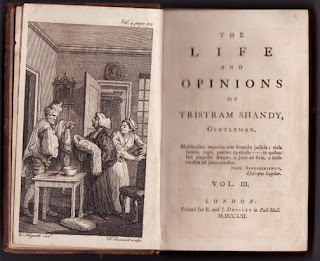News Release — March 9, 2010
David Foster Wallace Archive
Acquired by Harry Ransom Center
AUSTIN, Texas—The Harry Ransom Center, a humanities research library and museum at The University of Texas at Austin, has acquired the archive of writer David Foster Wallace (1962-2008), author of "Infinite Jest" (1996), "The Broom of the System" (1987), "Girl with Curious Hair" (1988) and numerous collections of stories and essays.
The archive contains manuscript materials for Wallace's books, stories and essays; research materials; Wallace's college and graduate school writings; juvenilia, including poems, stories and letters; teaching materials and books.
Highlights include handwritten notes and drafts of his critically acclaimed "Infinite Jest," the earliest appearance of his signature "David Foster Wallace" on "Viking Poem," written when he was six or seven years old, a copy of his dictionary with words circled throughout and his heavily annotated books by Don DeLillo, Cormac McCarthy, John Updike and more than 40 other authors.
Materials for Wallace's posthumous novel "The Pale King" are included in the archive but will remain with Little, Brown and Company until the book's publication, scheduled for April 2011.
"The Ransom Center is delighted to be the home of this remarkable archive," said Thomas F. Staley, director of the Ransom Center. "Wallace was undoubtedly one of the most talented writers of his generation. His works are intricate, complex, often humorous, sometimes challenging, but almost always brilliant, and his archive not only records his creative process but also demonstrates the dedicated choices he made in his works. I will always remember Wallace's description of a topspin forehand shot in one of his essays on tennis. It was the most accurate description of a tennis shot that I have ever read. This same acuity and perception pervades all of Wallace's works. We are delighted that his papers will be preserved and made accessible here."
In addition to offering fellowships to support scholarly research in the collection, the Ransom Center is planning future programs and events related to Wallace's work and the archive.

First page of a handwritten draft of Infinite Jest by David Foster Wallace. Harry Ransom Center.
"The work of David Foster Wallace, so vitally and fearlessly attached to the culture around it, will be a source of exploration for generations to come," commented novelist Don DeLillo.
Wallace's materials at the Ransom Center will reside alongside the papers of contemporary writers such as DeLillo, Norman Mailer, Doris Lessing and James Salter, as well as those of James Joyce and Samuel Beckett.
Wallace's publisher Little, Brown and Company is donating its editorial files relating to the author to the Ransom Center. Wallace worked with Little, Brown and Company beginning in 1993.
"Little, Brown and Company is happy to donate all of our correspondence and internal memos relating to 'Infinite Jest,' 'Brief Interviews with Hideous Men' (1999), 'Oblivion' (2004), 'A Supposedly Fun Thing I'll Never Do Again' and 'Consider the Lobster' to the Ransom Center," said Michael Pietsch, Little, Brown and Company's executive vice president and publisher and Wallace's longtime editor. "David's letters are delightful to read in themselves, and we hope that scholars will benefit from finding his notes to his editors and copy editors in the same archive with his draft manuscripts, journals and other correspondence."
The Wallace materials are being processed and organized and will be available to researchers and the public in fall 2010.
Some items from the archive can be viewed at www.hrc.utexas.edu/dfw, and a selection of materials will be on display in the Ransom Center's lobby through April 9.
High-resolution press images from the collection are available.




 That got your attention, didn’t it? It snatched mine—not because I had never seen the advertisement from
That got your attention, didn’t it? It snatched mine—not because I had never seen the advertisement from 
 That got your attention, didn’t it? It snatched mine—not because I had never seen the advertisement from
That got your attention, didn’t it? It snatched mine—not because I had never seen the advertisement from